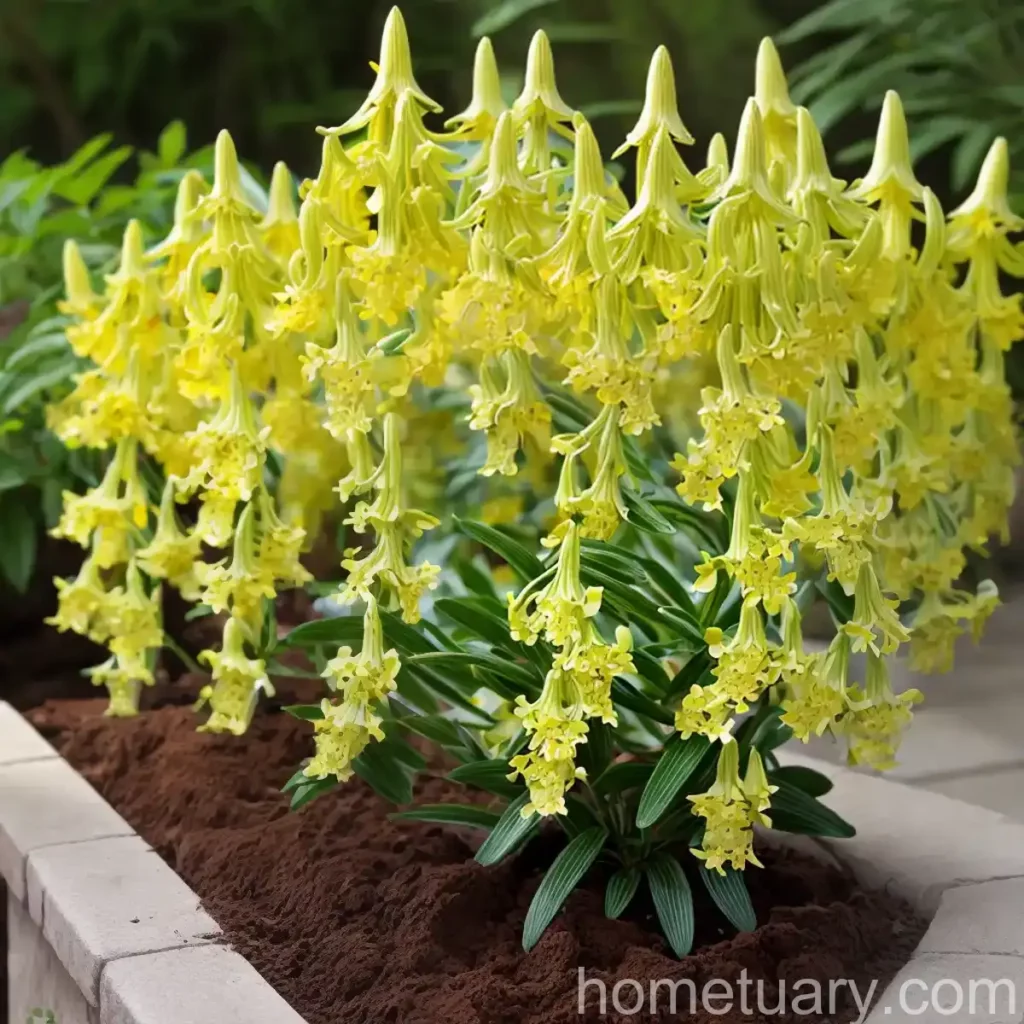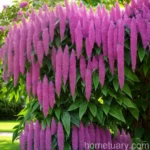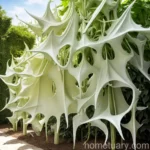Night Jessamine (Cestrum nocturnum): A Guide to Cultivation, Care, and Common Pests
Night jessamine, scientifically known as Cestrum nocturnum, is a captivating and fragrant plant that is prized by gardeners for its exotic appeal and heady fragrance. Also known as night blooming jessamine, this species is a member of the Solanaceae family and is native to the West Indies and tropical regions of the Americas.
In this comprehensive guide, we will explore the cultivation, uses, care requirements, common diseases, and pests associated with night jessamine. Additionally, we will provide valuable tips for propagation, pruning, and container cultivation. Whether you are a seasoned gardener or a novice enthusiast, this guide will equip you with the knowledge to successfully cultivate and care for night jessamine in your garden or landscape.
Key Takeaways
Before delving into the specifics of night jessamine cultivation and care, let’s highlight some key takeaways about this captivating plant:
- Scientific Name: Cestrum nocturnum
- Common Names: Night blooming jessamine, queen of the night plant, jessamine flowers, fragrant night flower, night jasmine, and flowering night plants.
- Fragrance: The plant emits a delightful, sweet fragrance, especially in the evening and at night, which adds a sensory delight to gardens and outdoor spaces.
- Cultivation: While it originates from tropical regions, night jessamine can be cultivated in a variety of climates, provided that its basic cultural requirements are met.
- Uses: The plant is often cultivated for ornamental and aromatic purposes, adding a touch of elegance and fragrance to gardens, patios, and outdoor living spaces.
Now, let’s explore the specific cultural requirements, care guidelines, and common issues associated with growing night jessamine.
Culture
Night jessamine is celebrated for its ease of cultivation and its ability to thrive in diverse environments. Whether grown in the ground or in containers, this charming plant adds an enchanting touch to any landscape. Here are the essential cultural considerations for cultivating night jessamine:
Water
Night jessamine prefers moist, well-draining soil. When establishing newly planted specimens, regular watering is essential to support root development and overall plant health. Once established, the plant is moderately drought tolerant, but it benefits from regular watering, particularly during periods of dry weather.
Sunlight
In terms of sunlight exposure, night jessamine thrives in partial to full sunlight. However, during extremely hot summer afternoons, it may benefit from some protection from the intense sun to prevent leaf scorch. In locations with hot, direct sunlight, providing some afternoon shade can be beneficial.
Fertilizer
Feeding night jessamine with a balanced, slow-release fertilizer in the spring can promote healthy growth and abundant flowering. Additionally, supplementing with a bloom-boosting fertilizer during the growing season can enhance the plant’s blooming performance, resulting in more prolific and fragrant blooms.
Soil
This species thrives in fertile, well-draining soil. A loose, airy potting mix is ideal when growing night jessamine in containers, ensuring that excess water can drain away from the roots, guarding against issues like root rot.
Pruning
Regular pruning is essential for shaping and maintaining the vitality of night jessamine. Remove spent flowers and trim back leggy growth to encourage bushier, more compact growth. Avoid heavy pruning during the peak flowering period to minimize the risk of reducing the following year’s blooms. Prune in late winter or early spring to remove dead or damaged stems and to shape the plant to maintain a tidy and attractive appearance.
Propagation
Propagating night jessamine can be achieved through several methods, including stem cuttings and seed propagation. Stem cuttings offer a reliable and straightforward means of propagation. Take 6-8 inch cuttings from healthy, non-flowering stems, remove the lower leaves, and place the cuttings in a well-draining mix. Maintain consistently moist soil and provide gentle bottom heat to encourage rooting. Once established, the new plants can be carefully transitioned to larger containers or planted in the garden.
Container Popularity
Night jessamine is an ideal candidate for container cultivation, making it a versatile addition to patios, balconies, and outdoor living spaces. The plant’s compact size and exquisite fragrance make it a popular choice for potted displays and aromatic accent plants.
Common Diseases
Despite its overall resilience, night jessamine can be susceptible to certain diseases, particularly when grown in conditions that do not meet its cultural needs. Some common diseases that may affect night jessamine include:
- Powdery mildew: This fungal disease presents as a powdery, white substance on the leaves, compromising the plant’s vigor and overall aesthetics.
- Root rot: Excessive moisture and poorly draining soil can lead to root rot, causing the plant to wilt and exhibit signs of decline.
Disease Diagnosis
When diagnosing diseases in night jessamine, it is essential to inspect the plant regularly for early signs of distress. By promptly addressing any issues, such as distorted growth, discoloration, or abnormal leaf drop, gardeners can mitigate the impact of diseases and maintain the plant’s long-term health.
Common Pests
In addition to diseases, night jessamine may also be vulnerable to attacks from common garden pests. Some of these pests include:
- Aphids: These small, soft-bodied insects feed on the plant’s sap, causing distorted growth and the presence of sticky honeydew.
- Whiteflies: These tiny, winged insects can congregate on the undersides of leaves, feeding on plant juices and potentially transmitting viral diseases.
Botanist’s Tips
To ensure the optimal health and performance of night jessamine, consider these botanist-endorsed tips:
- Regular monitoring: Regularly inspect your night jessamine for signs of pests, diseases, or environmental stress. Early detection allows for timely interventions, minimizing the impact on the plant’s overall health.
- Well-draining soil: Whether grown in the ground or in containers, providing well-draining soil is crucial to prevent waterlogged conditions that can lead to root rot and other issues.
- Fertilization schedule: Adhere to a regular fertilization schedule using a balanced, slow-release fertilizer and a bloom-boosting formulation to support the plant’s growth and flowering performance.
Fun Facts
Discover intriguing and little-known facts about night jessamine:
- Floral symbolism: In some cultures, night jessamine is associated with romance and love, making it an ideal addition to moonlit gardens and evening retreats.
- Pollinator attraction: The fragrant blooms of night jessamine are known to attract nocturnal pollinators, such as moths, adding to the plant’s ecological significance.
- Cultural significance: Night jessamine has a rich cultural history and is revered in various traditions for its mesmerizing fragrance and enchanting allure.
Links to External Resources
For further information on night jessamine cultivation, care, and potential landscape uses, consider exploring the following external resources:
- Cestrum nocturnum cultivation and care guide
- Night-blooming plants for moonlit gardens
- Nighttime sensory garden plants and design ideas
Conclusion
Night jessamine, with its intoxicating fragrance and captivating blooms, holds a special place in the world of ornamental plants. By understanding its cultural requirements, implementing proper care practices, and addressing potential pests and diseases, gardeners can cultivate vibrant and flourishing specimens of night jessamine. Whether grown in gardens, containers, or moonlit landscapes, this night-loving flora is sure to enchant and delight all who encounter it.
Through the insights and guidelines provided in this comprehensive guide, you are now equipped to embark on a rewarding journey of cultivating and caring for night jessamine, adding a touch of nighttime enchantment to your outdoor spaces.
Remember, as with any plant, attentive care and a deep appreciation for the natural beauty of night jessamine will result in a landscape adorned with the alluring fragrance and beautiful blossoms of this nocturnal treasure.















